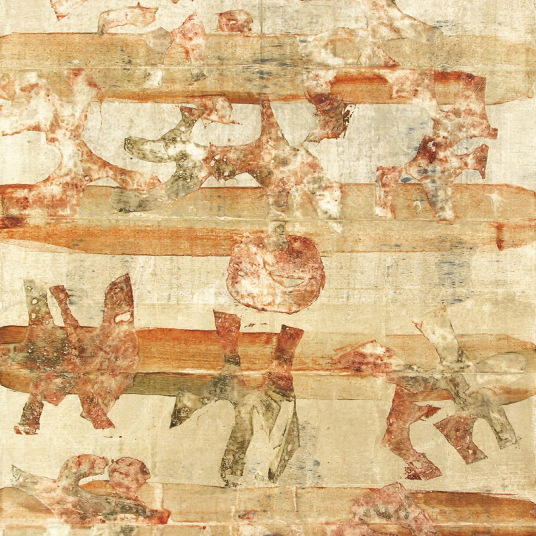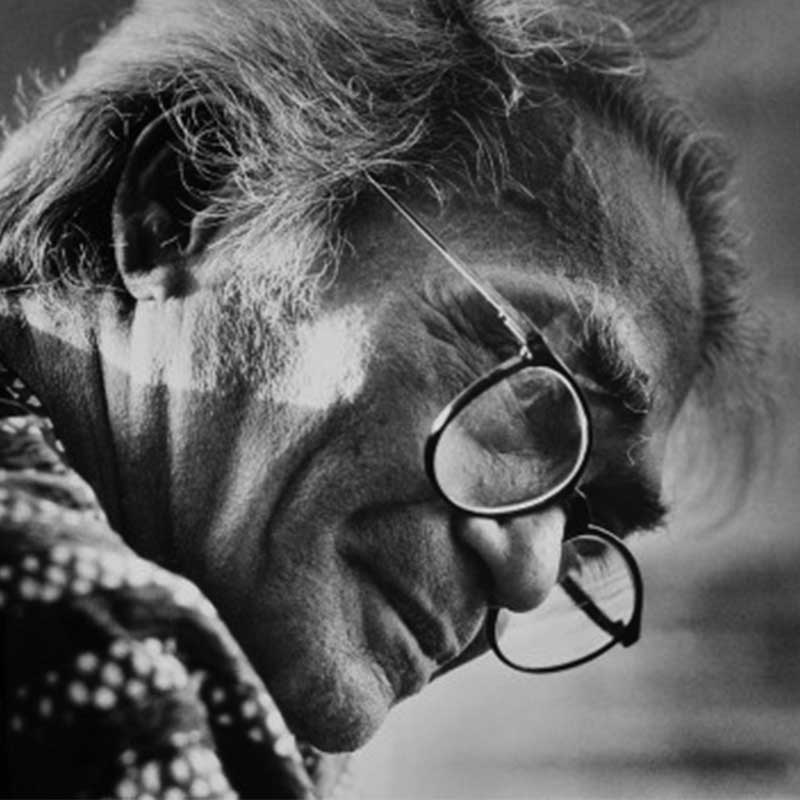
The exhibition brings together for the first time, works from two iconic collections in the city that were put together beginning from the early 1950s. Eleven of the fourteen works from the Jehangir Nicholson collection that reflect the collector’s great admiration for Gaitonde’s oeuvre and the TIFR collection that came into being through the great foresight of the institution’s founding director Dr. Homi Bhabha. The circle is complete with works from Pundole Art Gallery one of Mumbai’s first galleries that began a relationship with the artist from his earliest days as a painter...... a relationship that continued until his death in 2001.
Exhibition Catalogue:
V.S. Gaitonde: The Silent Observer
Price: 500.00 (Shipping cost not included)
Year of publication: 2019
Size: 27 x 24 cms
Type: Paperback
Pages: 48 pages
ISBN: 978-81-942408-0-8
To purchase: Write to us at connect@jnaf.org

Vasudeo S. Gaitonde (1924-2001) was born in Nagpur, Maharashtra. He received a scholarship at the age of 19, to study at the J.J. School of Art, where he was awarded a diploma in Painting in 1948. There, was also where he met the prolific artists Tyeb Mehta, Akbar Padamsee, S.H. Raza, and F.N. Souza. He subsequently became associated with the Progressive Artists’ Group and took part in the transformation of Indian artistic culture following Partition.
His connection with the PAG introduced him to Shankar B. Palsikar, who taught him the Indian miniature watercolour technique. Gaitonde was also inspired by the expressionistic work of Paul Klee. Although he is considered one of India’s most important abstract painters, during his lifetime, he preferred calling his work ‘non-objective’, and believed that ‘there is no such thing as abstract art.’
Gaitonde’s paintings, reminiscent of subliminal depths, are known for their spiritual quality and characteristic silence which is as meditative as it is eternal and momentous. The plain, large surfaces of layered paint possess an inherent quality of light. The textural structure along with the interplay of colour is the main aspect of his works. His compositions, inspired by zen philosophy, reveals his speech, and emotes silence.
Art, for Gaitonde, was a process complete in itself. In exploring his inner spaces and transient realities, it helped him to move towards himself. His paintings bring out the fact that the process is the result. He worked with various mediums and used a roller and palette knives to create his own layered texture. Over the years, he evolved as a painter who was increasingly more meticulous.
Throughout his life and posthumously, his work has been exhibited both in India and internationally. In 1963, he began to receive international recognition, ensuing his exhibitions at both London’s Gallery One and New York’s Gallery 63. In 2014 to 2015, the Solomon R Guggenheim Museum in New York organised a major retrospective of his work, titled ‘V.S. Gaitonde: Painting as Process, Painting as Life.’ More recently, his work was exhibited posthumously at The Jehangir Nicholson Art Foundation, titled ‘V.S. Gaitonde, The Silent Observer.’
Gaitonde was awarded the Padma Shri in 1971. He also won the Fleischmann Prize at the First Young Asians Artists Association in Tokyo in 1957 and the Rockefeller Fellowship in New York from 1964 to 1965. He lived and worked in New Delhi and passed away in 2001.